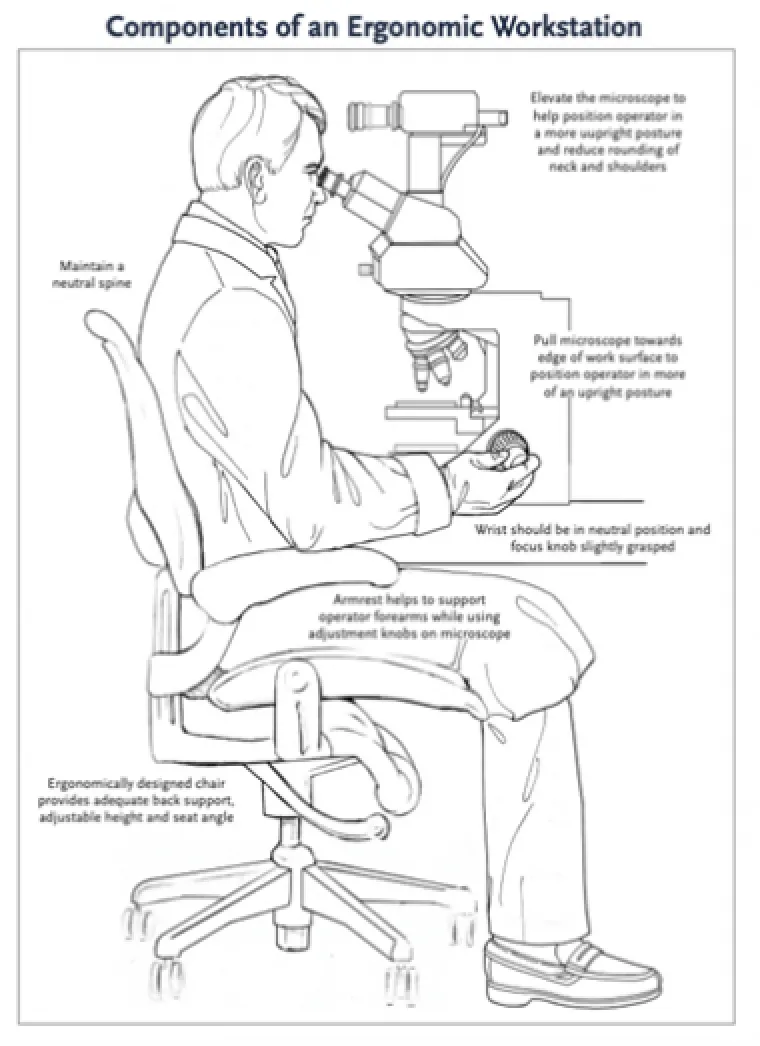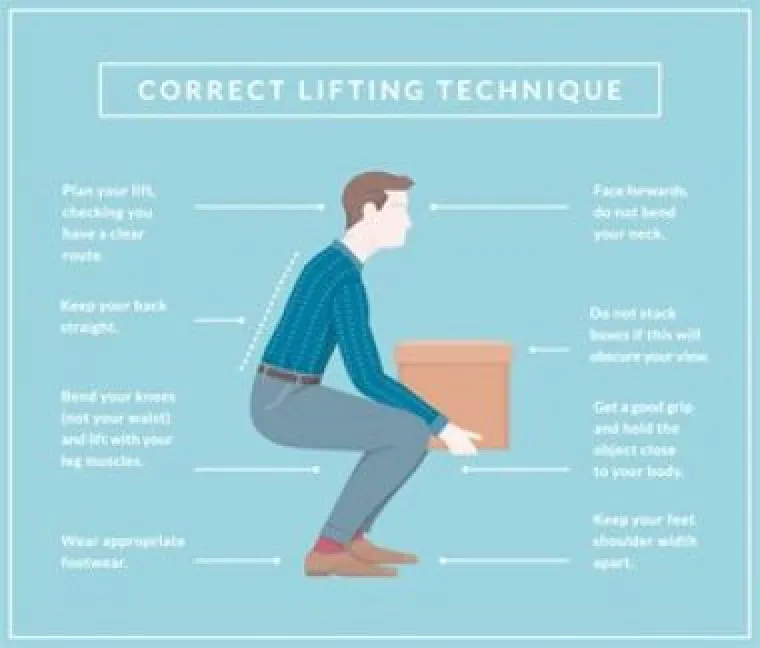Musculoskeletal disorders and repetitive strain injuries, such as carpal tunnel syndrome, tendonitis, muscle strains, and back pain, are the most common work-related health conditions. Ergonomics – the practice of fitting a job to a person – can prevent these conditions from occurring. This webpage provides general guidelines for ergonomics, specific ergonomic practices for laboratory tasks, and links to resources. To assess your laboratory, complete the Good Ergonomic Practices checklist.
General Guidelines for Ergonomics
- Maintain correct posture. Regardless of the task, workers should attempt to keep head, shoulders, and spine in alignment. This reduces strain on the ligaments and muscles that support the spine, preventing pain and fatigue.
- Relax arms and hands. Adjust positioning so that arms hang naturally from shoulders and hands are not tensed.
- Avoid static positions. Static postures can restrict blood flow, leading to fatigue and muscle damage. Taking short breaks, even just for a few seconds at a time, can reduce these risks.
- Take productive breaks. Every 15-20 minutes, depending on the task, take a short break to stretch and relax shoulders, hands, eyes, or any other areas of the body that feel tense.
- Bring your work to you. Often, individuals will adjust their body position in an awkward or uncomfortable way to fit a task. Consider ways to change your work space instead, such as adjusting chair or table height or choosing equipment fit to your body .
Specific Laboratory Practices
Fume hoods/BSCs: When working in a fume hood or biological safety cabinet, keep the viewing window clean to reduce eye strain. Adjust work to minimize the need to assume awkward body postures. Minimize contact pressure by not leaning arms on the edges of the work surface.
Pipetting: Especially over long periods of time, pipetting can result in repetitive strain injuries. Consider substituting electronic pipettes for manual pipettes, and ensure that the pipette is lightweight and fits the worker’s hand. Vary pipetting with other lab tasks, or take breaks every 15 to 20 minutes to complete hand stretches.
Pipetting Posture VideoMicroscopy: Microscopy can strain the eyes, shoulders, and back. Position the microscope and/or chair so that the worker does not need to bend their neck or back forward or raise their shoulders to see properly. Rest eyes every few minutes, either by looking at a wall or completing eye exercises.
Image
Computers: Working at computers can also place significant strain on the eyes, neck, shoulders, and lower back if ergonomics are not considered. When seated, maintain a neutral spine, ensure the chair is at an appropriate height, and keep feet flat on the floor. UA Risk Management provides links to ergonomic computer station equipment and further computer ergonomics training.
Posture at computer workstations video- Lifting: Lifting heavy objects is one of the leading causes of workplace injury. Before lifting or carrying a heavy item, plan ahead, considering where you need to go and whether someone else can help. When lifting, get close to the object, keep elbows and arms close to the body, maintain a straight back, and bend at the knees. Repeat this is in reverse when setting down the object. If you often lift heavy objects, consider using the NIOSH Lifting Equation App to assess the risk index for lifting tasks.

Other Laboratory Practices
The National Institutes of Health provides basic guidelines for other specific laboratory practices, including microtome/cryostat, flow cytometer, glove boxes, centrifuge rotors, and micro-manipulation.
Helpful Contacts
Research Laboratory & Safety Services: 520-626-6850, rrlss-help@email.arizona.edu
Occupational Health: 520-621-5643, occhealth-support@email.arizona.edu
Risk Management: 520-621-1790, risk@email.arizona.edu

